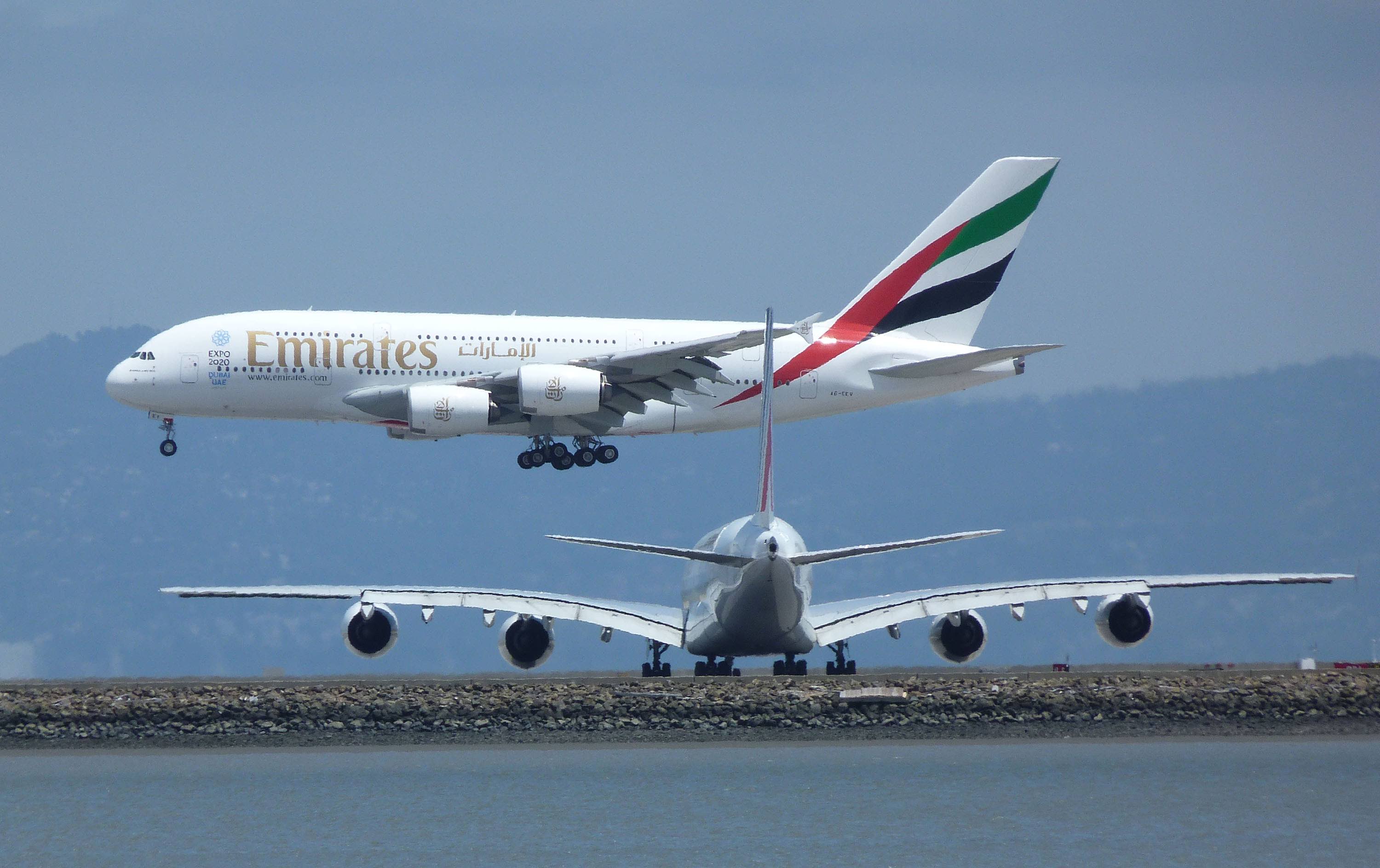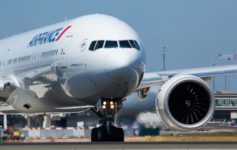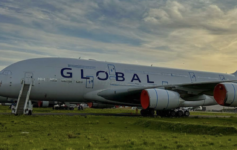Sir Tim Clark, the President of Emirates, argues that other carriers like Air France blew their chance with the Airbus A380. He’s not wrong, but the reality is a bit more complicated.
Sitting down with AirlineRatings, Clark was asked to contrast Emirates’ approach to the A380 versus that of Air France. Air France recently announced it would retire the A380 ahead of schedule. Here is his answer:
The A380 was a misfit for Air France. They never scaled, they only have ten aircraft. Yes, we faced the same teething problems, but we dealt with them because we were scaled enough to deal with it. If you’ve got a sub fleet of 10 it’s a bloody nightmare and the costs go through the roof, she is absolutely right. But if you got a hundred of them it’s a bit different. Your unit costs in operating with that number are a lot lower than having just ten.
Secondly, look at their interior. What did they actually do to shock and awe their market community with that A380 when it came to market? Why was it that it was Emirates, who took it after Singapore Airlines, that it lit up the planet in terms of showers and bars and big TV screens? We did it for a very well calculated reason. Not to blow our trumpet. But simply we had taken a huge risk and huge investment.
To belittle that investment by putting in a Business Class seat of 1990s-think and a First Class of 1980s-think and Economy Class seating and IFE of 1990s-think was not something we would have done, like Air France. The whole approach to the A380 at Air France and Lufthansa was ‘just more of the same.’ They lost the opportunity to really define it. They never ordered any more. British Airways didn’t order any more. BA should have had the same number of A380s as we have, hundred of those. They got 62 million people in the UK and a congested Heathrow hub, that should have worked easily.
Frequency + Capacity Controls
Clark makes several points, including:
- Per unit costs skyrocket when you only have 10 aircraft
- Outdated interiors made Air France A380 uncompetitive from day one
- Short-sided thinking when it comes to utilizing slot-controlled hubs
And he’s right on all three points.
Maybe if Air France had its latest first and business class product on the A380, they would be sticking around a bit longer. After all, Air France CEO Ben Smith specifically cited its outdated seats as a reason for pushing up the retirement date of the A380.
There’s no doubt unit costs are higher when the number of aircraft in your fleet are limited.
But I think Clark fails to appreciate the difference between capacity growth and profit growth, which are not necessarily directly related. It is true that an airline cannot cut it way to profitability. But through disciplined growth and slot-sitting, supply can effectively be controlled. That pushes up per-seat yield and keeps out competition. Emirates never faced this concern at its home base.
Second, frequency is king for business travelers. The very point of the A380 was to consolidate traffic into a larger aircraft. That makes a lot of sense in theory, but in practice is not feasible to run several A380s between New York and Paris each day if prices are not to drop dramatically.
It simply made sense for Air France to retire the A380 and the problem went beyond the outdated onboard product.
> Read More:Air France A380 Decision Is Sad, But Smart
> Read More:Six Reasons Air France Is Retiring A380
CONCLUSION
Clark notes that had the A380 been produced in 2004 instead of during the Great Recession, we would not be talking about its retirement today. I think he’s right. Clark is an astute man and his observations are always worth considering. Here, while I think his logic is sound considering why the A380 did not work for other carriers, he fails to account for two key reasons that transcend the A380. Controlling capacity and increasing frequency just did not fit into the A380 model.
What do you think of Clark’s A380 analysis?
(H/T: One Mile at a Time) // image: Bill Larkins / Wikimedia Commons





I think the A380 was just too big to serve all but a handful of markets, not enough to make it broadly profitable. Though I did like it (both the AF version – for some reason, angled seats didn’t bother me – and the BA one, which I just flew on Friday). Among the smoothest flights I have ever had. But the 787 can just serve more markets more efficiently, like AUS-LHR, justifying more sales.
On a separate AF matter, I think their strikes have just been a big drag on their corporate business. And now their ground crews are going on strike in solidarity with the rail unions beginning Dec. 5. (I’m wonder if LH and UA will be affected out of T1.)
Both the 787 and A380 were executed on a timeline that originally lined up with the Great Recession. Were it not for Boeing’s production delays and mismanagement, their launches would have overlapped. But both planes are designed for different business models, and it was not obvious yet in the 2006-2008 timeframe which would win.
So Sir Tim Clark is certainly tooting his own horn here…i.e. “I had the vision to make Dubai a great global connecting hub to maximize the use of the A380, but others just seemed to lack that vision”. And he’s not wrong about that. It begs the question, why didn’t Air France choose to do so as well?
Two engines! The 777-300 killed the 747-400/800 and the 787 and 350 killed the 380. When you can fly from secondary airports profitably and directly then no need to transit large hubs. The 747-400 ruled Tokyo Narita with so much connecting beyond traffic to NE and SE Asia from North America. But with the opening of lore and more direct service there was no reason to have a 615 seat plane from Sfo to NRT anymore. EK is blessed by Dubai’s physical location and the mess that is sub-continent Asia airlines also blessed then with the ability to fill those 380’s up.
I think you need to read between the lines on Clark’s argument a bit more. I think he was implying that making the Air France A380 more special would draw more demand itself. For an airline who buys only 10 A380’s, I think the best approach for AF would be to make them really stand out and special. They should be better than the competition with some upgraded products and a lot of marketing. They have that flag carrier advantage as well of being French, which allows them to promote the jet as “The Spirit of France” or something. I agree that they cannot send many A380’s to JFK purely because of the business demand size over there. But LA and the far east should work well enough for them. To what extent though is the question.
They cannot magically create demand, they would have to draw it in. Take EVA Air’s Hello Kitty planes. Why do they fly them to Chicago? Because it allows them to make a flight profitable which otherwise might be a risk.
Short-sighted.
I think your right and Clark has it wrong.
If you accept Clark’s premise only two things needed to happen for the A380 to be a success at Air France. 1. Buy a lot more. 2. Install a new world beating interior.
There are several problems with that. First AF was certainly pressured to buy a lot more A380’s as the home market customer. I’m pretty certain that they did the math and even when exploiting the advantages of a larger fleet found that the aircraft simply didn’t work in their route network the way it does for Emirates. Second it’s pretty clear that Emirates has been far more successful with their A380 than Ethiad has. Guess who has a far far better interior? Especially in the premium cabins. So clearly while the installed interior matters its not the only thing that does. Third if you accept Clark’s arguments then he is the only man in the room who properly understands the A380. Really? Of all the airline execs in the world your the only guy to unlock a magic formula? Or maybe just maybe it works at Emirates because Emirates has managed to wedge itself into a bit of a unique position.
Finally as Matthew notes Clark doesn’t appreciate that a huge chunk of AF’s business places a real value on frequency. There are good reasons why multiple flights of smaller aircraft are a better solution in the trans-atlantic market than a few flights of very large aircraft. The demand for frequency and more direct services are why the 787 was such a huge sales success and the A380 wasn’t.
Frequency on long routes doesn’t matter much. If I made up a JFK-CDG airline schedule, it should be fine to have the following
Flight 1 JFK-CDG 0900 – 2200
Flight 3 JFK-CDG 1700 – 0600
Flight 5 JFK-CDG 2200 – 1100
That is fine. I do not need a
Flight 7 leaving JFK at 1830 and a
Flight 9 leaving JFK at 2000
Is there a direct 0900 flight on any airline from the east coast to CDG?